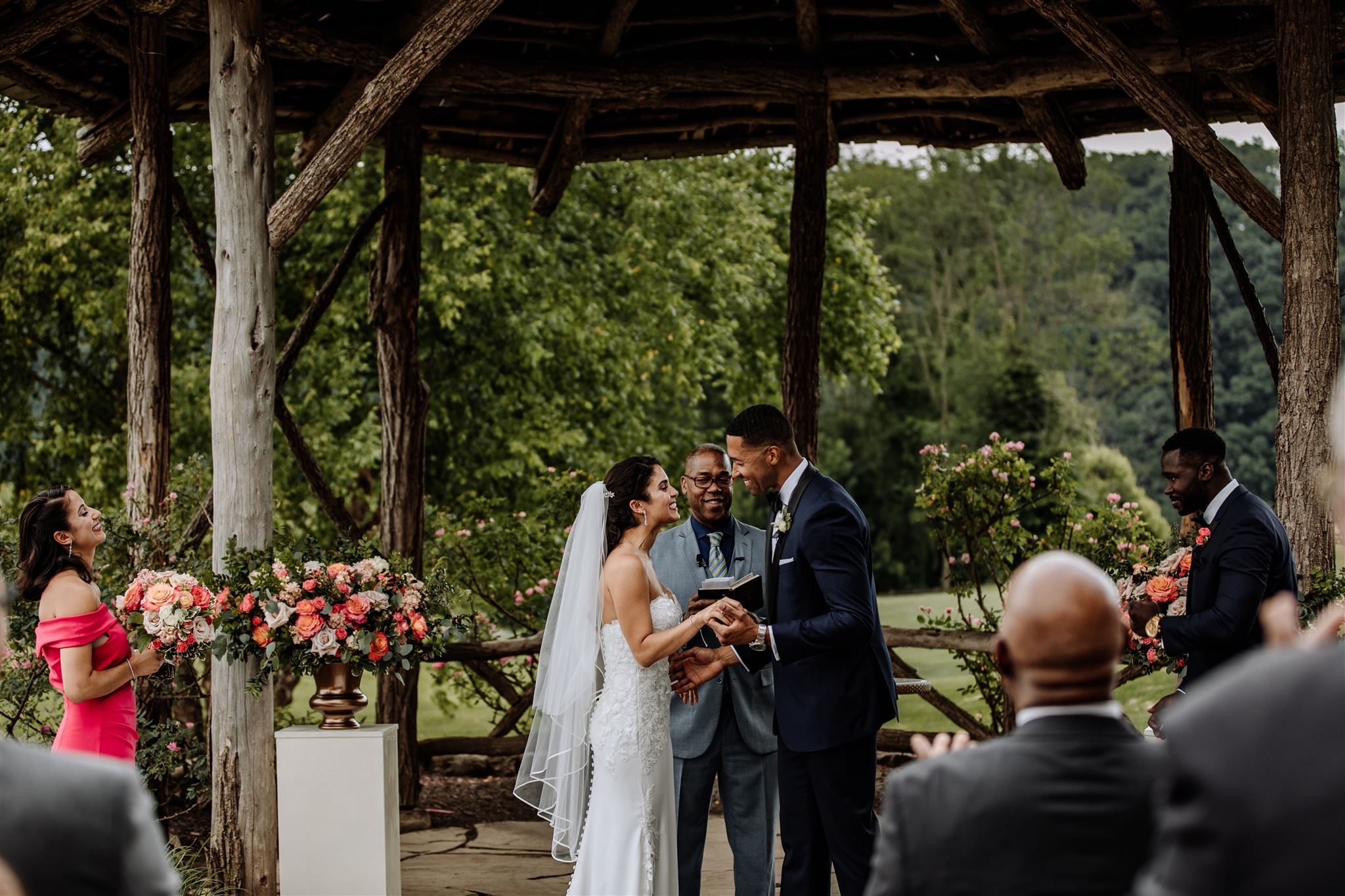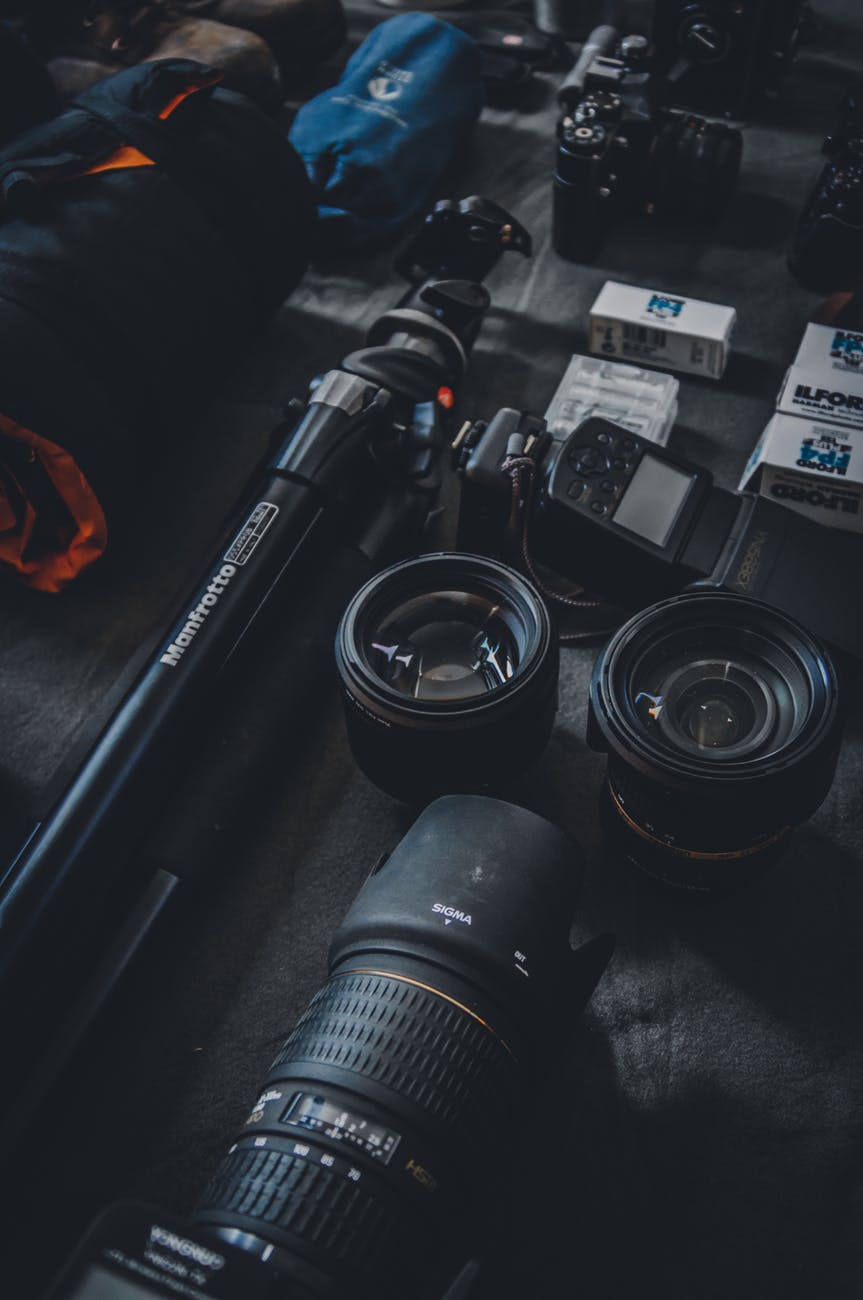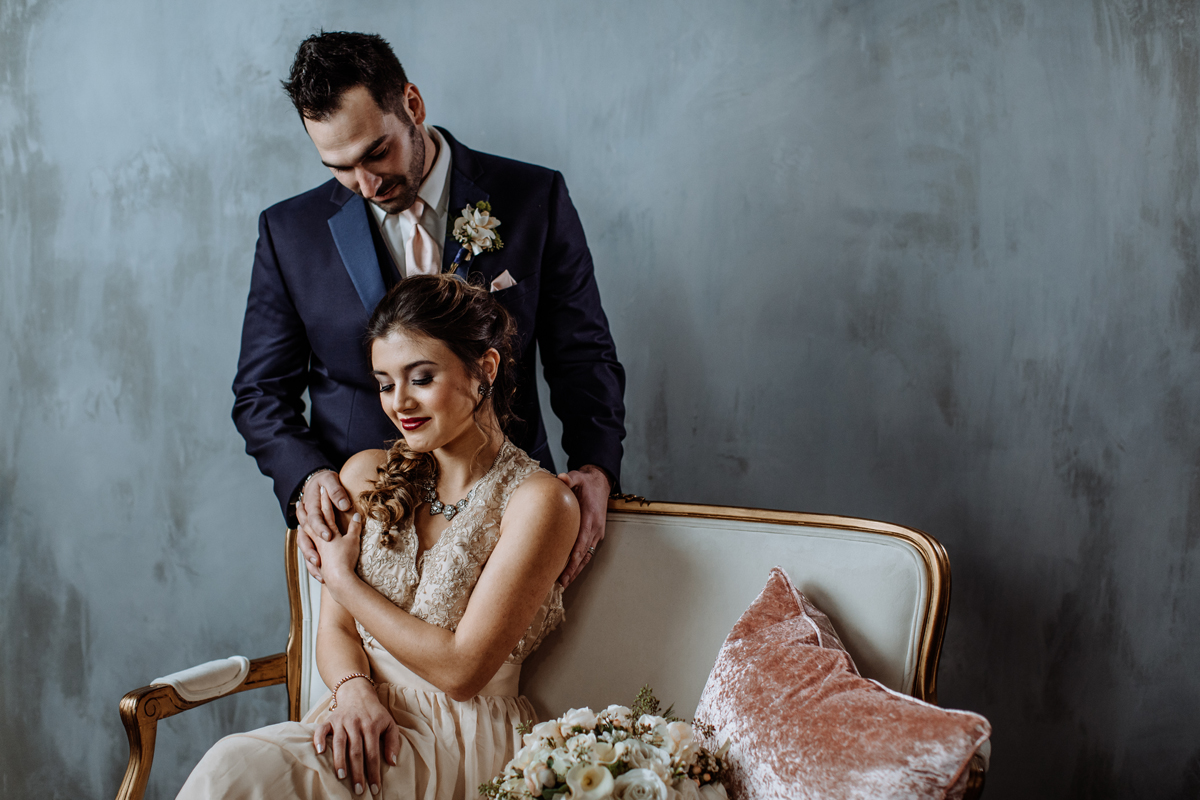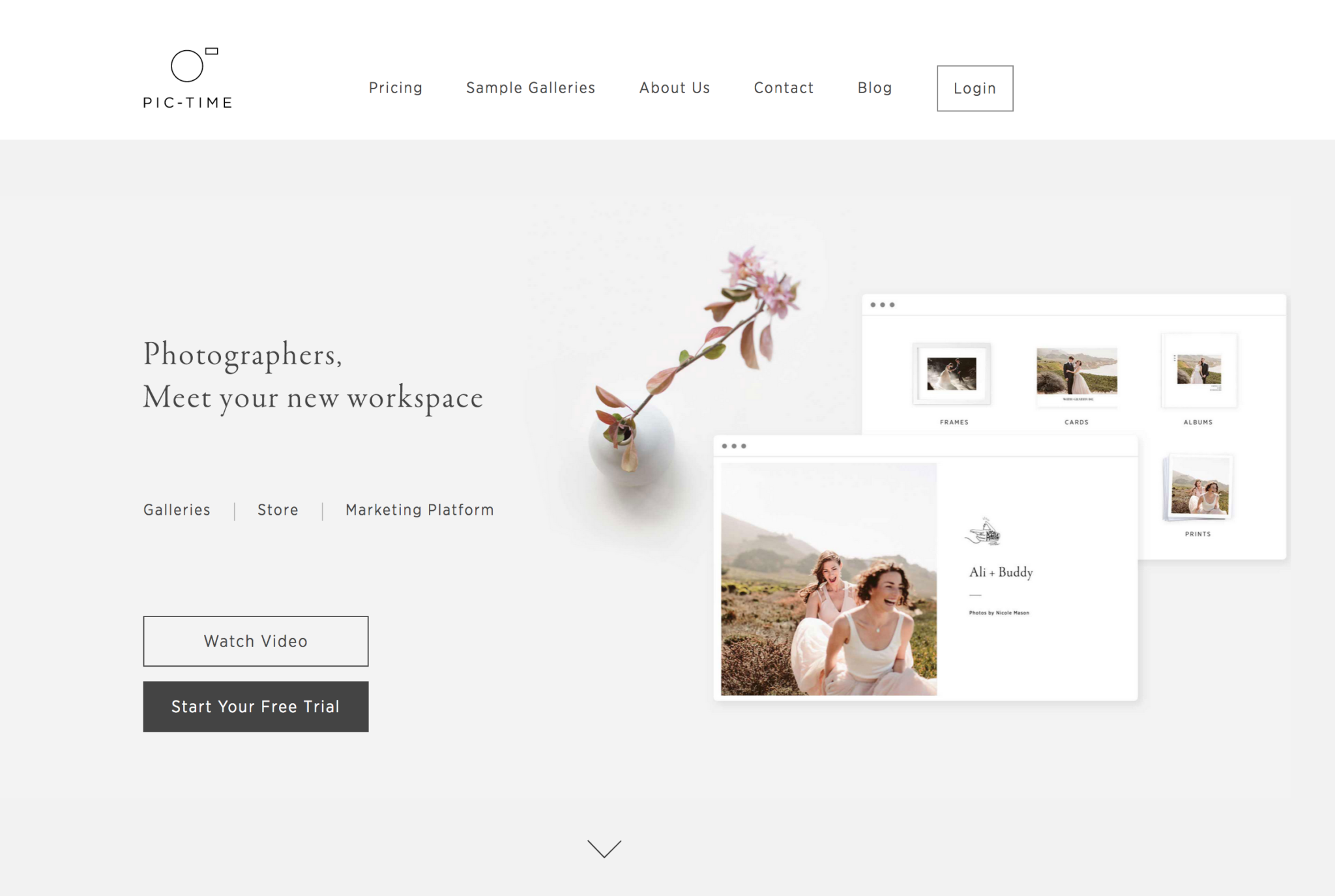Last Updated: February 14th, 2020
Growing up, photography was a great hobby for me. It turned into an intense passion as I was able to be artistic and document simple things in my own life like family get togethers. While I went to school for Graphic Design, I was always pulled back to photography as my calling in life. While it took a lot of effort, I grew my photography business and was able to go full time in Spring 2019. With all of this experience, I want to show you how to become a photographer in today’s post!
Unlike many articles you’ll find on this topic, I am going to detail my personal experiences and show you what I would consider the best route to take for making photography your career.
To do this successfully – you’ll need to follow these 15 Steps:
- Be a Good Photographer
- Choose Your Photography Niche
- Start a Photography Business
- Buy Professional Equipment
- Establish a Photography Website
- Set Beginner Pricing
- Get Your First Clients
- Be Active on Social Media
- Build a Solid Portfolio
- Define & Hone Your Photography Style
- Increase Prices for Success
- Invest in Your Business
- Emphasize Client Experience & Happiness
- Maintain a Positive Reputation
- Look for New Ways to Expand
I will break each of these down throughout the rest of this post, so you can know exactly what you need to do to learn how to become a photographer professionally. My photography career tips will apply to any style of photograph – so whether you want to be a portrait photography, wedding photography, corporate event photographer, real estate photographer, etc. – you’ll follow the same steps.
Be a Good Photographer
In order to do well as a professional photographer, you need to have a solid foundation of camera skills to rely on.
In my life, I grew up with a camera. I was always taking pictures. While my technical skill hasn’t always been the greatest, I’ve been significantly exposed to photography and grew to have a really great eye for composition.
Right now – you may be a total beginner with lofty dreams of a career in photography, or you already know what you are doing and just want to shift gears from being a hobbyist to making money with your photography abilities.
For the total beginners out there – check out these great resources we put together to help you learn all the fundamentals of photography.
- 101 Digital Photography Tips – A Comprehensive Guide
- Photography for Beginners: Where Do I Even Start?
- What’s Your Best Tip for Taking a Good Photo?
For more experienced photographers – just know you will need to continue learning a whole lot as you take on work for pay.
Choose Your Photography Niche

Photographers are a lot like teachers in that they will normally want to specialize in a specific niche.
For example, a “teacher” might specialize in teaching math, English, gym class, college vs. high school, etc. While every person on the teaching career path will be called a “teacher”, they all do something a little different.
In photography, there are many niches that will ultimately define who & what you photograph. Some of these include:
- Wedding Photography
- Portrait Photography
- Real Estate Photography
- Commercial Photography
- Fashion Photography
- Sports Photography
- Pet Photography
- Landscape Photography
- Medical Photography
This is by no means an exhaustive list…
Why should I specialize in a particular type of photography?
One of the biggest lessons I had to learn when I started down the path of making photography my career was that if you cast too wide of a net, you’ll end up getting no clients.
This always, always reminds me of this old quote we’ve all heard…
“Jack of all trades, master of none.”
In photography, our skills are pretty transferable. I can photograph portraits of someone, then go on to photograph pictures of a house. But, because I do both of these things, it means only some of my time is dedicated to honing my craft in one of these areas.
By focusing on one photography niche, you will be dedicating your time and energy to mastering that type of photography.
This is essential to know when you want to learn how to become a professional photographer because your potential clients will (most likely) not be looking for a photographer who does everything. More likely, they will want a photographer who is a master of the thing they want.
Example time – Think of it like this:
You are a searching for a photographer to shoot your wedding.
Do you want a photographer who has a great portfolio of landscape shots but never photographed a wedding before, or do you want someone who specializes in wedding photography? If it’s not clear – you want the wedding photographer to take your pictures.
The same rings true for virtually any photography style.
So – pick a photography niche and stick with it.
Note: this doesn’t mean you only have to photograph one type of subject. As a wedding photographer, I also shoot family, couples, and solo portraits. If it makes sense for there to be overlap in your niche, then go for it, but the main point here is that your brand should be designed around just one niche instead of being the all-inclusive option.
Start a Photography Business

If you want to become a photographer, you will need to start your own photography business.
Yes, there are other options out there for photography career paths that I cover in this post, but for the most part, they are going to be dead end jobs that are low paying.
I will not lie – starting a photography business is a scary thing.
Your life will change as you go from a photographer who enjoys taking pictures for fun to a business owner who is selling their photography skills.
But – having a photography business has been one of the most significant and life changing things for me. It’s up there with meeting my husband (not that I’m comparing).
Despite the challenges, having my own photography business has allowed me…
- To have more personal freedom
- To travel more
- To let success be in my own hands
- To do something I really enjoy for work
Having worked at other jobs in the past, I always felt extremely limited. Two weeks of time off just wasn’t working for me, and my salary was stagnant with small 2% raises every year. I truly felt stuck!
Starting a photography business changed that for me, and it can do the same for you if you are really passionate about having a career in photography of your own making.
The 3 Biggest Benefits of Starting a Photography Business:
There are a lot of reasons why you would want to start a photography business.
For the record, when I say “photography business”, I mean actually creating a legal business entity like a Limited Liability Company (LLC). If that sounds daunting, it is actually very easy to do with a little research online. You can also use a platform like LegalZoom or even talk to a lawyer to help you set one up. This is a great free resource for getting started.
1). You will take your photography journey more seriously.
I found that I was able to take my goal of becoming a photographer more seriously once I took the steps to set up my business. With all the paperwork and a little bit of money needed to get things established. I definitely needed my goals to become a reality.
I think for most people, this will ring true.
2). You get serious tax benefits.
As you get into photography professionally, you will need to purchase new and better camera gear, as well as a couple of services to make your customer experience better like Honeybook (for contracts/invoices).
Put really simply – the things you buy as a business like cameras, camera lenses, flashes, even hotel rooms when you travel for gigs – can all be written off on your taxes. This means you get to save money in the long run even when you have to by thousands of dollars worth of new gear.
3). Clients will take you more seriously.
Ultimately – most clients (at least those that will pay higher prices that make a photography lifestyle sustainable) want to see that you are a reputable and serious photographer.
My clients often put down between $3,500 – $5,000 for wedding photography, so you can be sure they want to know they will be getting their monies worth.
Want to learn more about starting a photo business? Here are some related posts:
- Beginner’s Guide: How to Set Win-Win Photography Service Prices
- 10 Radical Ways to Promote Your Wedding Photography Service
- Career Guide: How Do You Become a Portrait Photographer?
- How To Become a Successful Wedding Photographer – 10 Steps for Victory
- 21 Myths of a Professional Photography Career – Explained!
- The Wedding Photography Booking Process in 10 Steps (+ Helpful Tips to Secure More Clients!)
- 11 Photography Business Tips So You Can Make More Money
Buy Professional Equipment

If you are expecting people to spend money on your photography service, you need to have the camera gear to supply them with the best images possible.
I do believe that a great photographer can use any camera and take good photos. But – a great photographer with great quality gear will help them to better produce consistent quality regardless of location or subject matter.
Thinking about gear I’ve used throughout my life: If I showed up to a photo session with a point-and-shoot camera, I could take good photos. I can nail the composition. I can hunt for the best light available. But, no shot I take on that beginner camera will compare to one taken on my professional Canon 5D Mark IV. It’s simply not possible.
With that said – your choice of gear will help you to define your style from a technical standpoint.
I always recommend that aspiring professional photographers get the best equipment they can budget for.
I decided to get the Canon 5D Mark III as my first pro camera, and upgraded to the 5D Mark IV, because this is the quality I want for my client’s images.
No matter your choice – you do have options as well.
You can buy gear new & used, and can even rent equipment to try it before you buy it.
Personally, I’ve always used Amazon for big purchases since you can often find things a little cheaper and a lot of camera gear comes in kits that includes things like camera backpacks, SD cards, extra batteries, and sometimes even a decent camera lens or two. By signing up for a FREE Amazon Business account, you can take advantage of special pricing as well.
For photography gear rentals, this is done easily online at LensRentals.com and BorrowLenses.com.
Need help figuring out what gear you need to shoot photos professionally? Check out our Resource pages for help! We cover our favorite cameras, lenses, flash gear, and more.
Establish a Photography Website
Every photography business needs an online presence.
Your website will be the #1 source of information that prospective clients will be checking out.
A great website for a photographer will include things like…
- A photo portfolio of your best work
- The pricing of your photography service
- Information about YOU
- Branding elements like a logo and other graphics
- Frequently Asked Questions (FAQ) page
- Contact information so people can inquire about your service
Having all of this information in one place makes it easy for potential clients to get in touch with you.
Is putting together your own website hard?
There was probably a time on the internet where building a website required a lot of coding experience. That time is no longer!
You can easily put together a website by using a website builder like Squarespace. This is what I use for my Hand & Arrow Photography brand.
For more unique looking websites, you can also go the route of setting up a WordPress website with Bluehost web hosting. I use this for Formed From Light here!
Related posts:
Set Beginner Pricing
The first time you set your photography service prices, you’re probably going to feel a good deal of anxiety.
You will ask yourself questions like…
- Is this the right price for my service?
- Will anyone actually want to pay me this much?
- Am I too cheap?
I felt the exact same thing. What did I learn from it?
There really is no “right” price.
You just need to research what other photographers are charging, and start off with pricing that is a little lower. Sometimes, a whole lot lower.
Example: At the start of my wedding photography business, I photographed my 1st wedding for $500. Today, 3+ years later, I charge $3,500 as my lowest package price.
When starting a photography business, a big part of this process is getting the first couple of clients in the door. This allows you to do a few things:
- Get confident that people want your service
- Grow your portfolio with the help of paying clients
- Have money to invest in new photography gear
- Start getting paid
Get Your First Clients

So – how do you get your first clients?
I would consider this to be the single hardest thing you will need to accomplish on your road to becoming a pro photographer.
Let’s face it – there are a lot of photographers out there. Like – a whole lot.
What will make someone want to work with you – a total newbie?
You will need to answer this question yourself, and be prepared to sell yourself to these potential clients.
A few things you can do to differentiate yourself:
- Offer low introductory pricing
- Showcase a unique style (even in a limited portfolio)
- Have a great personality people can relate with (this is HUGE!)
- Be confident in your skills, and accepting of your weaknesses that are the result of inexperience
- Add transparency into the mix as you communicate with your new potential clients so they know what they can expect from your service
You can also read our full post on How to Get Your First Photography Client for more.
Remember: all it takes is a couple of great clients for you to build your photography service reputation and begin to get more and more work.
Be Active on Social Media
The 2nd most important online presence you should have (after your personal website) is your social media account(s).
For photographers, social media is essential for giving potential clients an opportunity to see your work and get in touch with you.
Currently, the best social media platform for photographers is Instagram because it is designed to be a photo sharing community.
Instagram has been so great for my business that it’s actually driven about 80% of my bookings. That is an INSANE figure!
5 Tips for Success on Social Media
1). Actually post regularly.
2). Post your latest and best images.
3). Include call-to-action phrases.
4). Tag your content with keywords, locations, hashtags, etc. that you’re potential clients will be searching.
5). Engage with other users on the platform.
Important to note: having social media serves no purpose if you aren’t using it regularly. It’s better to have one platform that you will use regularly instead of 5 that you can’t keep up with.
If you need help growing your Instagram account, check out Kicksta. Kicksta provides a great service that will help you grow your IG following quick.
Related posts on social media:
Build a Solid Portfolio

Every photographer needs to create an online portfolio.
What is a photography portfolio? A portfolio is a curated collection of your best images.
For many clients, it might be the first time they are really exposed to your work. You want to put your best foot forward and show them what they can expect from you if they booked you to do photography work for them.
But I don’t have too many pictures right now, what do I do? The good news is – everyone starts off with a small portfolio. It takes time and experience to build the portfolio you ultimately want to have.
How to Build a Portfolio – Beginner’s Guide
Often the hardest part of building an awesome portfolio is having the appropriate subject matter. For things like landscape photography, the solution is easy – go places and take photos of the environment.
When I see people struggling to build a portfolio, it is most frequently found in portrait, wedding, and event photography. This is because getting people to take pictures of isn’t always easy – and weddings/events don’t happen in spaces where you’d be able to just drop by and grab some photos.
To build a portrait photography portfolio quick without paying clients:
- Enlist the help of friends/family
- Put together a styled shoot
- Post a model call on your social media
To build a wedding/event photography portfolio quickly without paying clients:
- Put together (or join) a themed styled shoot
- Become a second shooter and/or assistant for an established photographer
The reality of things is this: it’s a lot easier to build your portfolio than you may think, but it does take some time. More than this, it takes a actual effort to do the required networking.
How to Display Your Online Portfolio:
There are many different options for displaying your images online. A few we have and do use include:
- Dedicated website page. I put together a gallery to showcase our best work that is easily accessible from our website top bar.
- A blog roll. I post blogs from individual shoots I have done to showcase a larger collection of work from a single event or session.
- Social media portfolio. Most social media sites allow you to post photos, take advantage of this. On Facebook, you can post images to your page gallery. On Instagram, your entire feed is comprised of photos. People look at both of these things (and others) to get exposed to your work – so keep it consistent and high quality.
- Online gallery integration. Your online photo gallery platform may include an option to showcase your work portfolio. This is a great feature of Pic-Time – our current online gallery platform.
Define & Hone Your Photography Style
In my experience, photography style will evolve over time.
This is completely natural and a great thing as an artist to be able to evolve.
What will become important as you grow your photography business and build a reputation is to begin to lock down your style of photography. Your “style” will dictate everything from how you interact with your clients while photographing them to how your edited images look at the end of the process.
The Core Elements of Style:
My husband & I (as Hand and Arrow Photography) have worked hard to define our approach to portrait and wedding photography. We have been in the process of really defining our style so it can remain consistent no matter who, what, where, or when we are shooting.
Some of the features of our photographic style:
- Natural & true-to-life editing style
- Elicit authentic reactions from our portrait subjects
- Include wide and tight shots
- Low contrast black and white photography edits
- Gently desaturated green tones (for more color contrast)
- Increased luminance in the orange tones (for better skin)
To do all of this successfully, we use a combination of tools. Our personalities and eye for composition carry a lot of the weight upfront. We use posing prompts to help guide the couple’s we work with into more natural interactions that make for some great photos that look authentic. We then use Lightroom presets like Signature Edit’s Genesis Collection to help get photo edit that we can connect with.
On paper, it’s all very simple. In reality, it’s taken quite a bit of time and experience to really refine the style we want to convey.
The most important thing: your style should be your own. When you first start out in photography, it can be easy to just want to emulate what others are doing. But, finding ways to separate yourself from other photographers will be very important when it comes to the growth and lasting power of your business.
Increase Prices for Success

Learning how to become a photographer is designed with this moment in mind.
By now – you would have laid a significant groundwork and should be ready to “make it” as a photographer.
You have started off by offering shoots for free or a low wage – and you know that isn’t sustainable in the long-term.
You have started building a portfolio, and are now attracting a solid audience.
You are doing everything right by putting together a website and growing your social media accounts, so people can see your work and have an easy way to get in touch.
Now – you need to raise your prices.
This is hugely important because charging higher prices means you can…
- Pay yourself a living wage
- Cover your expenses and pay your bills
- Invest in better equipment and client services
- Pay an assistant to help out
The big questions most people have – how do I raise my prices, and what’s a good rate to be charging?
There is no one-size fits all solution, but after raising my prices several times over the past few years (all with good success), I can give you some professional advice.
Do market research into your competition.
Look up 10 photographers in your area. How much are they charging for the same photography service? How experienced are they? Most likely – you will want to raise your prices in the area of the average of these 10 photographers.
Do note – prices can sometimes be misleading as a $3,000 service that includes a photo album, $200 print credit, and an anniversary shoot is very different than a $3,000 service that doesn’t include any of those things.
There is no “perfect” number.
Sometimes, you just need to increase your prices to what you feel is reasonable. On occasion, I raise my prices arbitrarily just to test the market. That is – I just want to see if people are willing to pay more for the same service – and it’s often worked in my case!
Your pricing needs to be designed around your ability to live.
You should price your photography services around being able to pay for your current (and future desired) lifestyle. I talk about this in depth in this post.
Factor in your skill level & reputation.
People respect and want to work with skilled photographers with solid reputations. Yes, there will always be people out there who want to pay bottom dollar – those are not your ideal clients.
I am fortunate to have prospective clients come to me and, with very little discussion, want to book my services. This is because I have experience, showcase my experience, have a great end product, and have many client reviews showcasing I am reputable. Your prices will increase as all of these things increase.
Related posts: Beginner’s Guide: How to Set Win-Win Photography Service Prices.
Invest in Your Business
When you are just starting out with your photography business, money will (most likely) be tight. You might be stretching yourself thin just to pick up a nice camera and lens to work with.
I totally understand this and can relate!
When I started in wedding photography, I worked with a super cheap Canon DSLR camera meant for beginner photographers. When I started to get serious and realized this was the direction I wanted to go in, that’s when I spent a good chunk of money out of my personal savings to upgrade. For a good while, I took photos strictly on my new Canon 5D Mark III paired with an old 50mm kit lens (worth about $100).
As I began to book more and more clients, and raise my prices in the process, I became more able to afford better gear. I made out a list of everything I needed and wanted – and started to buy things gradually as money came in.
In this “investment phase” I spent around $30,000 dollars on camera gear and business services that I felt were necessary. This figure is reflective of some items being doubled so my husband could work as a second shooter with me. I’d imagine the average person will need to put out around $15,000 or so to have the high quality gear they will want to be successful in this industry.
Remember: $15,000 may seem like a lot to spend, but it’s tax deductible if you set up a business. When you begin charging hundreds and thousands of dollars for your service, you will recoup this in no time. Not to mention, after you get the main gear you need, you will not need to continue to spend money on the same items except for occasional replacements as gear breaks down.
One other thing: as you start to acquire expensive equipment like I do, it’s a good idea to pick up photography business insurance so you can cover your gear and other things. You can read all about our experience with Hiscox Insurance for more advice in this area.
Emphasize Client Experience & Happiness

As much as you may love taking photos, your photography business should be about what you can offer your clients.
This simple fact is what may turn some people away from wanting to become professional photographers.
The reality is – once you start accepting money for your photography, people have expectations for you to deliver great photos. There is no retry button…
If you follow the steps so far I’ve outlined in this post, though, you are effectively setting expectations already. Early on, you knew your limitations and charged low prices accordingly.
As you raise your prices, you raise them with your skill level going up.
And amazingly – photography becomes much easier as you get more experience doing it!
There are things I can do with a camera basically with my eyes closed (but not really because photography is very visual) that might take others days to sort out without the experience and knowledge.
Throughout this entire business journey, you’ll want to keep your client’s experience at the top of your list. It is wildly important!
So – how do you keep clients happy and give them a great experience?
There are a couple things I do regularly, and for all my clients, that helps me to succeed:
- Communicate. Keeping the door open for people to get in touch with you is very valuable to having a good working relationship.
- Set expectations. “Early and often” is what I like to say. If you can’t do something, it’s important to be upfront about it.
- Simplify their interactions with your business. Everything from how a client gets in touch with you for the first time to how they sign a contract and pay their invoice to you is a big deal. At the end of this section I’ll show you some things I use to simplify my business in this way.
- Over deliver. There is nothing better than not only making a client happy by providing them the exact service they paid for, but by giving them even more. Often times, I over-deliver in small ways that add up. I take control and help coordinate things during wedding days. I throw in some extra photos in their digital gallery. It’s the small things that add a lot of extra value.
What do you use to enhance your client experience?
There are just a couple services I have been using lately that I really love and wanted to share with you since they really help me to simplify my customer experience. They are:
Honeybook

Honeybook is a “customer relationship manager” platform, otherwise known as a CRM platform. Very early on in my photography business, I would have clients sign contracts with pen-and-paper…not very easy at all. I would also accept payment in check form – also not particularly convenient.
Honeybook helped change all of that for me.
Honeybook allows me to send contracts out to new clients quickly. It also allows them to sign their contract online – simplifying this process for them. When it comes to invoicing their first non-refundable retainer payment, and future payments, this can all be set up in HB as well. It’s incredibly helpful – and is packed with a ton of other great benefits if you take the time to explore.
For more on Honeybook, check out our review, FAQ, or sign up yourself for a free 7 day trial.
If you purchase a paid plan through Honeybook using our link, you will receive 50% off your first year’s subscription!
Pic-Time

Pic-Time is an online gallery and integrated digital storefront. This is used to send photo galleries to your clients, and enables them to review proofs, buy physical products like prints, canvases, and albums, and share photos with their friends & family.
For professional photographers, Pic-Time is a no brainer solution, and is far superior to just sending photos on a flash drive through the mail or trying to fit them into an email attachment.
With a beautiful online interface, using Pic-Time will allow you to leave a lasting impression on your clients.
For more on Pic-Time, check out our comprehensive review and walkthrough for all the details. You can also get started with a FREE account right now!
Maintain a Positive Reputation
An established photography business will have a much better chance of succeeding long term if it can maintain a positive reputation in the eyes of its customers.
The single most important piece of your reputation is the social proof – ie: your online reviews.
Today, most people will check reviews before selecting any type of service. I did it with my wedding photographer (and all my other wedding vendors). I do it with contractors before I pay someone to do work on my house.
Reviews are a way for clients to relay to you (the photographer) that you did a great job. They are also a way for them to tell other people that you did a great job.
Going even deeper – a positive reputation means that your current and past clients will be likely to refer you to their friends & family.
Remember earlier how I mentioned about 80% of my leads come from Instagram? The other 20% come from referrals – and every year this figure is growing more and more as old clients refer new people to me.
The best part? People who are referred to you by someone else know that you can be trusted to deliver a great experience. These people also tend to be more willing than most to pay for your top service packages.
Look for New Ways to Expand
Photography businesses, like any business, always need to stay a step ahead. You will continue to have success if you are able to sell your services and expand your business offerings.
For myself, I started this website as a way of reaching out and educating other photographers (both beginners and pros like me). This seemed like a no-brainer because I’ve always enjoyed writing and educating others, and it has the added benefit of earning me a little money.
In my actual photography work, the one area I’ve found to consistently help expand my business offerings is to partner with other creatives. I have a great working referral system with DJs, videographers, and others in the industry that makes it easier to stay in business.
There really is no limit here!
Conclusion
Learning how to become a photographer is the easy part. Now, I hope you you will take these 15 simple steps to heart and apply them as you look to turn photography into a career of your own.
Do you have any questions after all of this? Feel free to ask away in the comments or reach out to me directly via email!